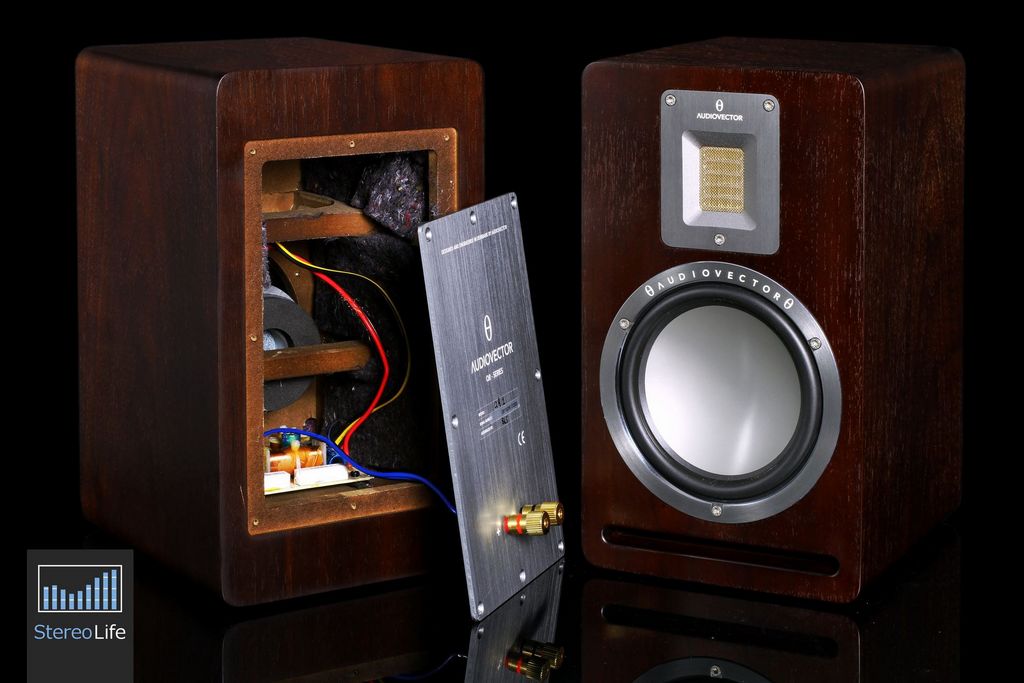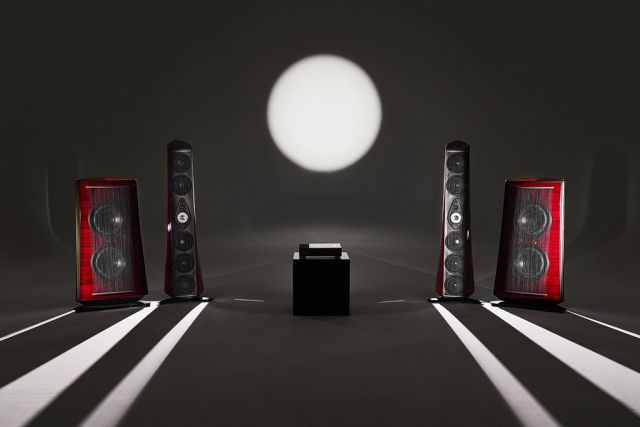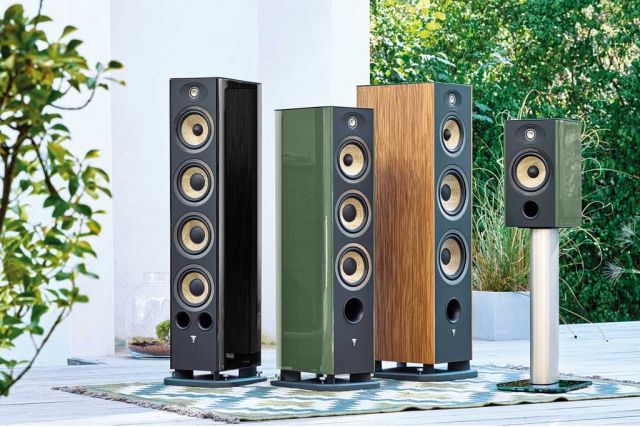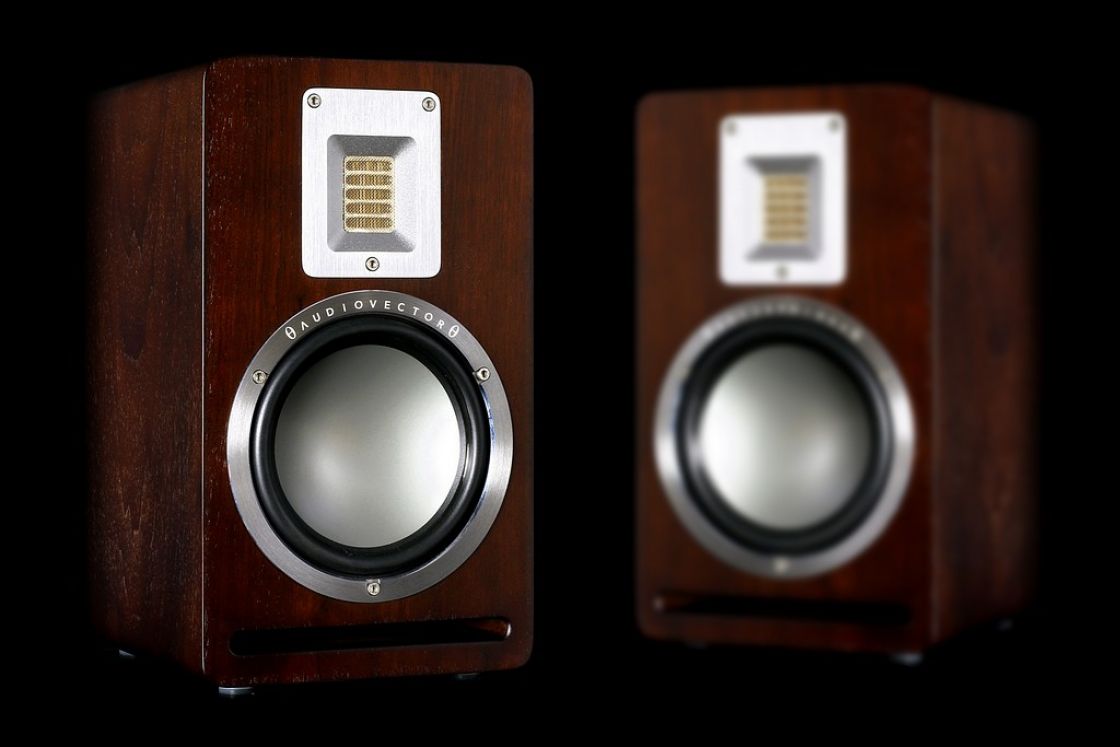
- Reviews
- Posted
Audiovector QR1
Audiovector is a company which doesn't need an extra philosophy - what it already has is enough to tell the story. And the story was mainly created by one man - Ole Kliffoth. He is responsible for most of the solutions Audiovector uses in its speakers, including five foundations of corporate technology - ADC (Active Direct Concept), IUC (Individual Upgrade Concept), LCC (Low Compression Concept), SEC (Soundstage Enhancement Concept) and NES (No Energy Storage). In conjunction with other features, they have one job - to make the sound faster, more direct and more dynamic. Audiovector's products are easy to recognize because of the curved side walls, metal panels with drivers and various, sometimes very bold, finishing versions.
When the company announced the launch of a new series, I instantly caught two key information from a press release. First one - QR speakers will be noticeably cheaper than the SR series. The second, even more important information - QR is the first series which was created from scratch by Mads Klifoth - son of the Audiovector's founder. For many years Mads has been helping his father running the company, but now he decided to share his talent with the world. My guess is that the new speakers are a test of his skills. If they turn out to be good, maybe Mads will take over the reins for good and will introduce even more changes. Now we have a chance to see what's what since we received one of the freshly assembled, still warm QR1 monitor speakers in walnut veneer which was also introduced as a novelty.
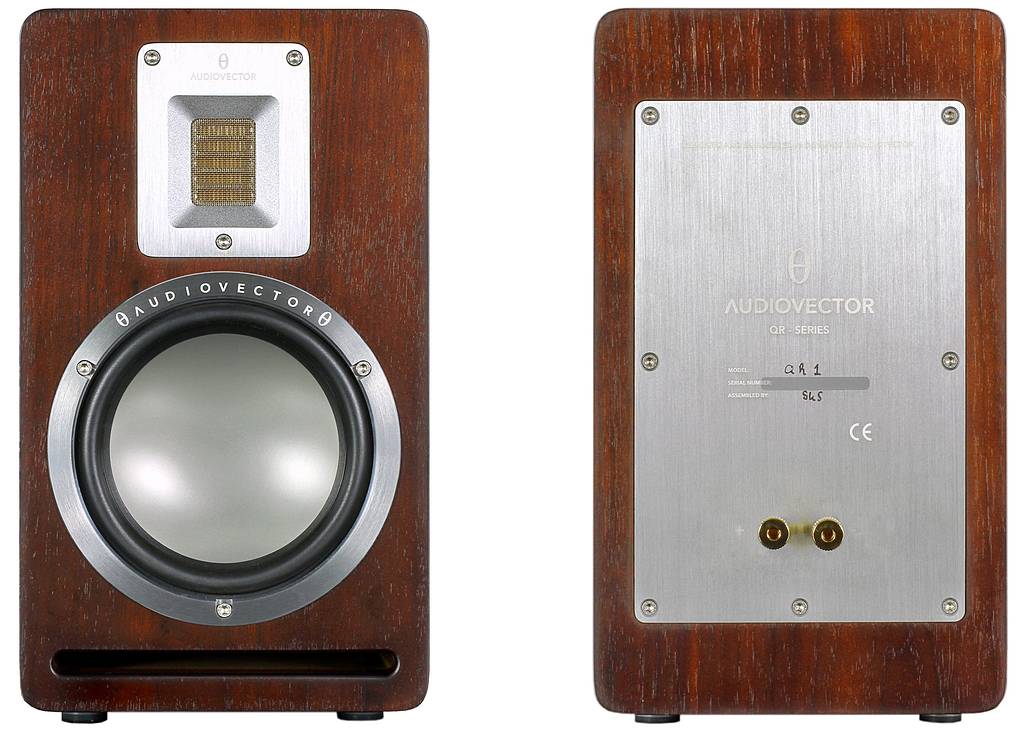
Design and functionality
Looking at the first pictures and descriptions of this new product, it was hard to imagine a better combination of existing Audiovector's solutions with new ideas which make the speakers more interesting, better, and by the way - cheaper. My guess is that Mads Kliffoth has already 'messed up' with the catalogue because it's rather difficult to become a speaker designer from day to day. QR series clearly distances itself from other models - they have rectangular enclosures, sandwich woofers, AMT tweeters and interesting bass-reflex ports. In the QR1 monitor speakers the bass-reflex takes the form of a narrow slit placed at the front, but in the QR3 floorstanding speakers, the tunnel blows down towards the base. Both solutions are designed to make the speaker placement in the room easier, and here Mads apparently decided to deal with one of the problems of his generation - limited living space and the need to reconcile several functions in one room. Hardly anyone can afford to place the speakers in the middle of the living room or to allocate this whole area for audiophile purposes. Nowadays, for most people, this is a luxury. The resignation of several costly solutions will help keep the prices at a decent level. At the same time, we cannot say that the new Audiovector's speakers are completely 'ordinary'. They certainly stand out from the crowd because of the sandwich woofers and AMT tweeters.
So what do we don't get in QR speakers? First of all, we can't order individual colour finishing, at least for now. The biggest difference in relation to the SR Series is the lack of the Individual Upgrade Concept system. Speakers marked with IUC logo can be returned to the factory in order to improve the performance - technicians install better components, while also refreshing the paint and renewing the warranty. So you can have better speakers without reselling them. In QR series there is no such option - these speakers are what they are. They don't have several levels of performance to choose from. But this is not a crime since most sets on the market are sold in a 'closed' form, and Audiovector is one of the few manufacturers offering such a 'path of development'. All the rest, with the exception of a few companies, are absolutely not wondering what will happen with the speakers that had already been bought. The IUC is a beneficial offer for the owners. However, for the manufacturer, this is a kind of burden. They have to take care of the supply of components needed for the upgrade, and a paint shop located in Copenhagen is not cheap to maintain either. Perhaps this is why the QR series is not subject to the IUC. Or maybe the introduction of further improvements in these sets didn't bring the expected results and that is why the company decided to introduce QR1 and QR3 as complete, finished products.
By the way, I'm curious what we'll see in this series in the future. So far, the compact monitor speakers and medium-sized floorstanders are probably the best possible solution, but who knows - maybe soon Audiovector will also introduce a larger floorstanders, a center speaker or a subwoofer? Knowing Audiovector, we may also expect active, perhaps even wireless versions. QR speakers with built-in amplifiers should be available this December. So far I wonder whether a generational change in Audiovector can be only seen, or also heard? While Ole Klifoth is a nice, quiet guy holding vast knowledge and experience, Mads seems to be a very energetic and courageous man. A positive freak. My guess is that some of his ideas have already been implemented. His father certainly appreciates Mads's work in the fields such as new ways of listening to music and social media. So does he also know how to make good speakers?
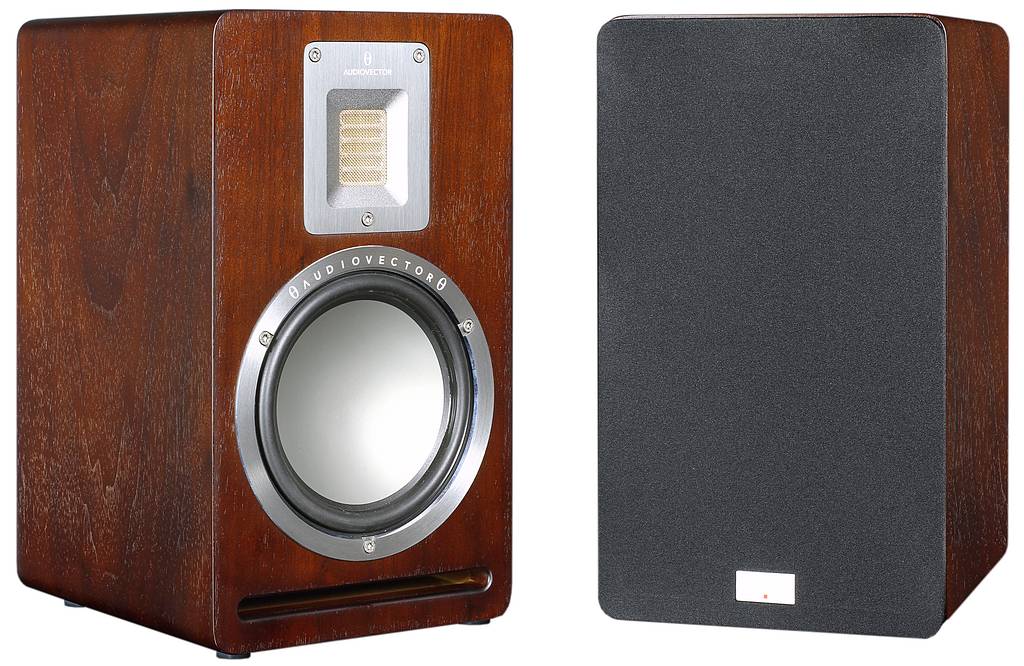
Sound performance
I don't know if QR1 are actually the work of a 'young generation', and how many solutions developed earlier were applied in them, but I instantly noticed many elements characteristic for Audiovector's sound. These new monitors sound vigorous, fresh and brisk. In low tones, they can properly apply and maintain enviable pressure level. The specific freedom, speed of reaction and soundstage defined with a flourish - these are the features that reminded me of the SR series speakers. If you like the sound of these more expensive Audiovectors, you will find the same philosophy of sound here. I don't know whether Mads Klifoth has a similar approach to music, or agrees with the vision of his father, but he was able to maintain a certain continuity in a smaller budget.
Basically, I've explained a lot to fans of the Danish brand. Keeping a similar company's sound character in the new series will be important not only for those who have already had a contact with Audiovectors, but even for music lovers looking for their first speakers. This means in fact that regardless of the price range, the company has worked out an aesthetic that appeals to many audiophiles and certainly will be continued. Even if the company has changed the person responsible for the design. Consistency in audio equipment is more important than some may think. Audiovector obviously cares about the customers who like the company's sound so much that they decided to buy one of its products. If you choose the QR1, I'm sure you'll want to find the best electronics and even cables for them. Changing the speakers for the better model will be the next step, probably after a couple of years. Believe me, once the moment comes, you will start the hunt from higher Audiovector's model, and perhaps you will call off this search at this stage. Maybe then the company will release a new series named, for example, FS, ST or QX, and the model of similar dimensions will fit perfectly in your system giving similar, but better sound. Personally, I have always respected companies with such approach, so after the first listening to QR1, I liked them very much.
In addition to the characteristic features of each Audiovector's products, the performance of reviewed speakers is defined by two things. The first one is a tweeter. Each time we are dealing with a ribbon transducer, AMT driver or any electrostatic or magnetostatic tweeter, we can always expect an open, spatial and detailed high frequencies. QR1 are no exception - their highs almost melt in the air around the speakers, glittering with many shades and creating a true spectacle before us. Because of this, we perceive the sound as crisp, lively and direct. There is no subduing or suppressing emotions. Although this is not the high-end level of quality yet, a specific nature of this driver significantly distinguishes QR1 from the competition. If you like a little bolder sound, and while listening to the typical speakers with soft domes you feel as if you went to a concert with swabs in your ears - the QR1 will immediately pull out the earplugs and move you closer to the soundstage. I wrote this, of course, with some exaggeration, because such a realistic experience is available only with much more expensive speakers, but I feel that this comparison clearly reflects the nature of sound presented by the tweeters applied here. Fortunately, they don't clatter. The quality of the treble goes hand in hand with the amount, so I have no reason to complain here. It should be noted, however, that the designers didn't clip the wings of the tweeter or mask its nature. They even tuned the crossovers to lightly emphasize their advantages. For sure the sound is slightly brighter, but firstly - this is done in good taste, and secondly - dealing with so pure and volatile highs, they just had to show what these AMT drivers can really do.
The second thing characteristic of QR1 is at the other edge of the band. Low frequencies reproduced by sandwich woofers offer a unique combination of depth and resilience. I don't know whether it has something to do with the slotted bass-reflex (to some extent it surely does), but the driver must be a very refined construction. Otherwise, even a good tuning of the enclosure and the resonance system wouldn't give such results. The bass of QR1 reminded me of older ELAC models, as well as B&W 603 S3. I know, I know... For some it's an audiophile archaeology, but not without reason I compare the Danish monitor speakers with floorstanders equipped with aluminium woofers. QR1 have very cool lows, and their sound is not slowed down or dominated by the bass. When the recording requires, they can go into areas the monitor speakers of this size shouldn't reach, and then they are able to keep the right pace, intensity and pulse of the music. Their sound is not violent or jagged. Although we won't find warm sound temperature, characteristic of the paper or polypropylene drivers. The general nature of the bass is rather pleasant and 'swinging'. We may say the same about the mids. The temperature is rather close to zero or even slightly chilled, but in spite of the 'soul made of metal', the sound is also very consistent, smooth and artistic. If my impressions reach Mads Klifoth, he might be surprised, but whatever - I think that the tweeter applied in the QR1 is very good, but the woofer is even better.
Briefly about other aspects of the sound. Dynamics - better than we could expect after the sets of this size. For me, it goes better with medium-sized floor standing speakers than little boxes. Soundstage? Extensive and three-dimensional, with particular emphasis on width, extended slightly forward. I would add microdynamics to the list of the biggest advantages of QR1. The ability to show energy even in minor impulses. Due to the small amount of such a 'plankton', we usually feel flattening and averaging sound after we change good headphones to loudspeakers. You may complain about the acoustics, but here's some brutal truth - in a case of many speakers, these tiny signals are lost somewhere in the crossover or between the coils and even the perfect adaptation of acoustic listening room doesn't give us them back. QR1 are doing their best to avoid such an impression.
Cons? Some may not like gently accentuated treble, as well as sound temperature, which strives for neutrality, but rather on the cool side. Both of these features, however, are included in this philosophy of shaping the sound and it's hard for me to imagine that the sound of QR1 would be better if the midrange was warmer and the treble was trimmed. For me, it wouldn't fit here, but if that's what you need, you can try to achieve it with a good amplifier or cables.
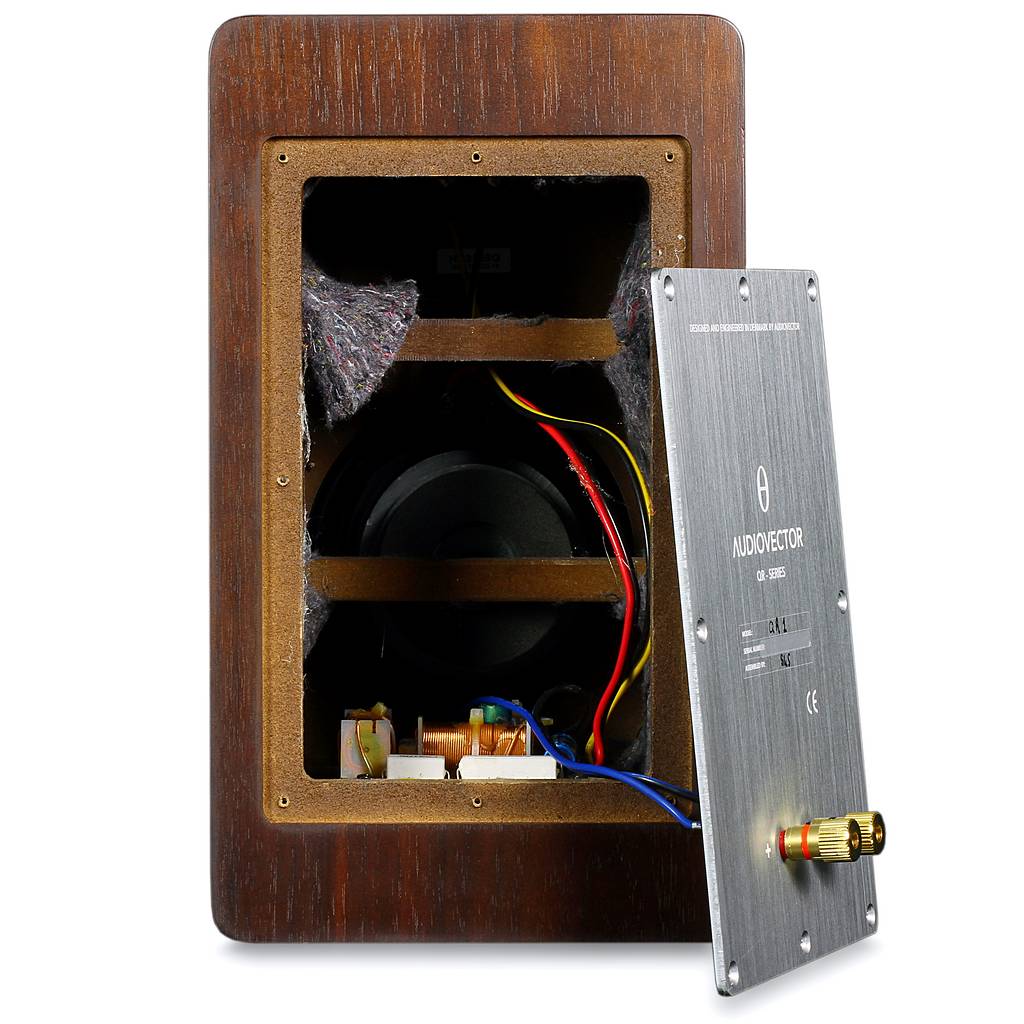
Build quality and technical parameters
Audiovector QR1 is a two-way monitor in a ventilated enclosure. Interesting, wide bass-reflex ports are placed at the front which gives the user much room to maneuver when it comes to setting the speakers in the listening room. Greater rigidity of the boxes has been achieved through the use of HFD rather than popular MDF panels. Danes say that with thicker walls, the enclosures are more resistant to resonances. The new models use quite sophisticated drivers. The bass-midrange units have double magnets and their membranes have a sandwich structure consisting of three layers. The "bread" here is made of two layers of aluminium, and inside, as 'ham' or 'cheese' we have a middle layer of glue-like foam, whose task is to prevent resonance. According to the manufacturer, the entire membrane behaves as a perfect piston up to a frequency of 3 kHz, which is why this system was named Pure Piston Technology. Mads Klifoth says that most metal diaphragm speakers have very irregular characteristics above 1 kHz. Woofers in the new QR series were designed to be much better in this respect and thus they do not introduce unwanted coloration in the medium frequencies. Highs are reproduced by a AMT transducer known from other, usually much more expensive Audiovectors. The diaphragm in this driver has been covered with gold, and the front panel is made of anodized aluminium finished in gray, perfectly matching the rims of low-midrange. An interesting protective mesh S-STOP filter was inspired by the tweeters used in professional studio sets. This solution has significantly increased the purity of the high frequencies. When it comes to performance, the QR1 have a frequency response extending from 45 Hz to 45 kHz at 87 dB and impedance specified by the manufacturer as 4-8 Ω. Probably it means that both calculated and measured nominal and minimum impedance is contained within this range. To translate it into plain English - if you have a good amplifier which works with 4 Ω and 8 Ω speakers, everything shall be fine.
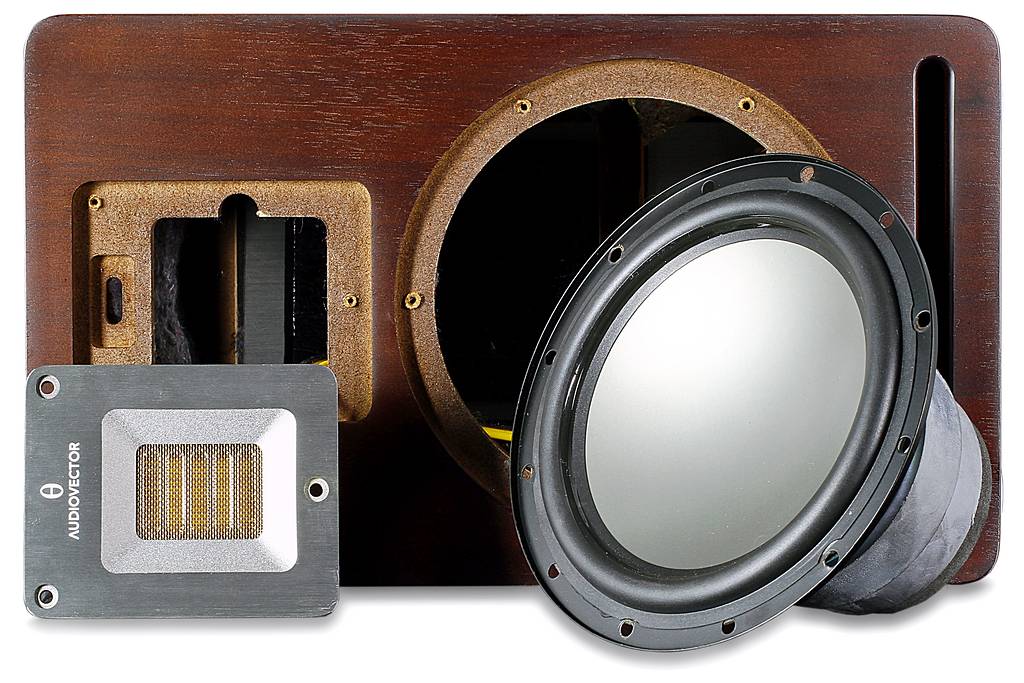
System configuration
Marantz HD-DAC1, T+A E-Serie Music Player Balanced, T+A E-Serie Power Plant Balanced, Atoll IN100 SE, Cardas Parsec, Enerr Tablette 6S, Enerr Symbol Hybrid, Solid Tech Radius Duo 3.
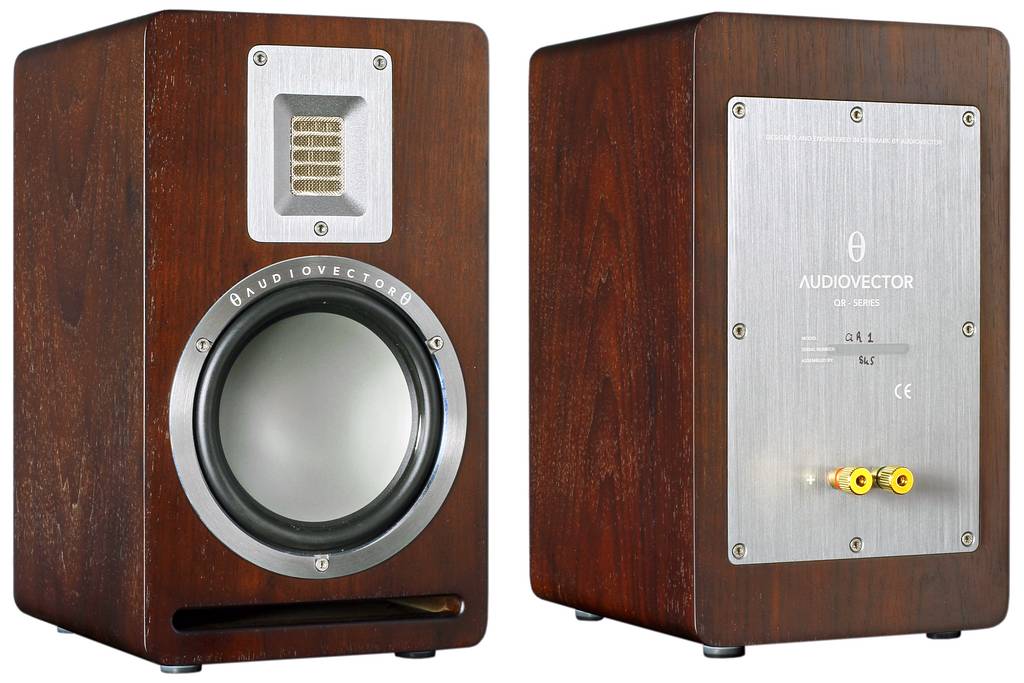
Verdict
In my opinion, the QR series may be one of the most important Audiovector's products for many years. We can't yet say it's a turning point in the history of the Danish manufacturer because so far it has been very successful indeed, but there are at least three reasons why I believe that the QR1s are unique speakers. Firstly, they have been designed for so-called regular users, but Audiovector managed to keep the brand's characteristic sound with a fantastic bass and saturated, spatial treble. Secondly, achieving such a level of quality didn't stop the Danish designers from maintaining an affordable price. And thirdly - Mads Kliffoth proved he's able to design good speakers and, who knows, maybe even beat his father in this field? We still have time for such conclusions, but for now, I can say one thing - the guy knows what he's doing!
Technical data
Speakers type: Monitor, 2-way, ported
Sensitivity: 87 dB
Impedance: 4-8 Ω
Frequency response: 45 Hz - 45 kHz
Dimensions (H/W/D): 32,5/19/23,2 cm
Weight: 6.2 kg (one piece)
Price: €1050/pair
Manufacturer: Audiovector
Sound performance
Editor's rating
8.4Overall8Sound9Functionality8Design8Quality9Price







